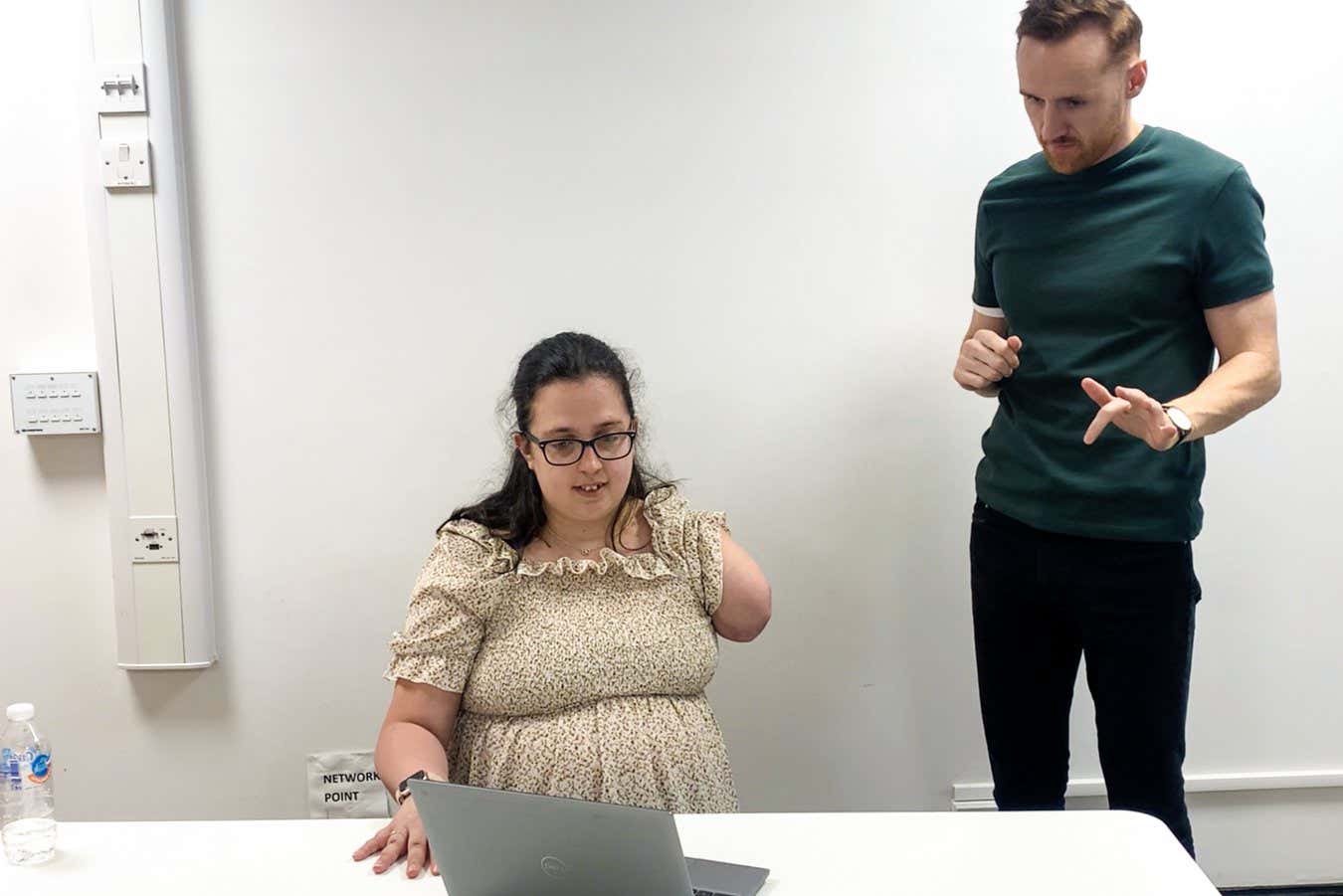Previous research in macaques suggests that part of the brain reorganises itself when a limb is removed, but now a study in people has turned that idea on its head
By Luke Taylor
21 August 2025
Trial participant Emily Wheldon with one of the researchers as she practiced attempting to move the lost fingers from her amputated arm before going into an MRI scanner
Tamar Makin/Hunter Schone
Our brain may not be as capable of rewiring following an amputation as we thought, which could have serious implications for how we treat a common complication called phantom limb pain.
A part of the brain called the somatosensory cortex receives and processes sensory information across the body, such as touch and temperature. Some studies suggest the areas of the cortex are mapped to different parts of the body, so a different area will light up if you burn your hand versus your toe, for instance.
Read more
Brain scans are putting a major theory of consciousness to the test
Advertisement
It has also been suggested that the somatosensory cortex reorganises itself in the case of an amputation or severed nerve. For example, in a study of macaques whose arm nerves had been severed, neurons in the somatosensory cortex that normally respond to stimulation of the hand were instead activated by touching the face. The researchers concluded that some of the area of the cortex that responds to the hand being touched had been reallocated to the face.
But for the first time, Tamar Makin at the University of Cambridge and her colleagues have compared the brain activity of people before and after an amputation – and found it doesn’t actually change.
The researchers used MRI to scan the brains of three people before their arms were amputated for medical reasons. During the scans, they were asked to purse their lips and tap their fingers.
